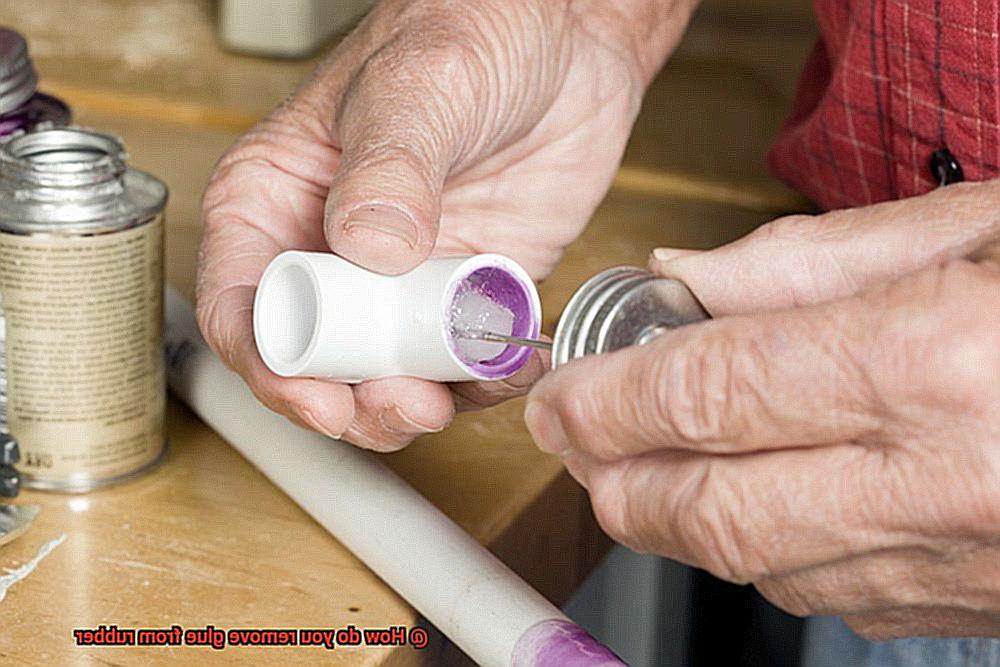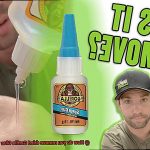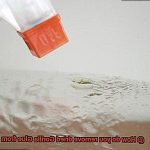Are you tired of getting stuck in a sticky mess with glue on your rubber stuff? It’s beyond annoying to see your beloved rubber sandals, phone case, or even household items covered in unwanted adhesive. But don’t fret, my friend. I’m here to spill the beans on some tried-and-true techniques for removing glue from rubber surfaces.
Believe it or not, the process is way easier than you think. With a dash of patience and the right tools in your arsenal, you can say goodbye to that pesky glue and bring back the shine to your rubber goodies. Whether you’re dealing with super glue, craft glue, or those annoying tape or sticker leftovers, we’ve got the solutions you need.
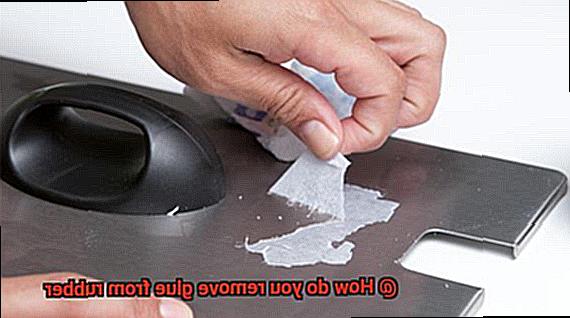
In this blog post, we’ll dive into various strategies that will help you tackle the glue removal process like a pro. From everyday household remedies to special products made just for this sticky situation – we’ve got all the tricks up our sleeves. So grab your rubber items and get ready for an adhesive adventure like no other.
What is Glue?
Contents
- 1 What is Glue?
- 2 Different Types of Glue
- 3 How to Remove Glue from Rubber Surfaces
- 3.1 Gather your supplies
- 3.2 Choose the appropriate method
- 3.3 Apply rubbing alcohol or acetone
- 3.4 Use heat to soften the glue
- 3.5 Scrape off the softened glue
- 3.6 Try alternative methods if needed
- 3.7 Clean the rubber surface
- 3.8 Rinse and dry
- 3.9 Using Rubbing Alcohol or Acetone
- 3.10 Using Heat
- 3.11 Using an Adhesive Remover
- 3.12 Using Natural Products
- 4 Safety Precautions to Take When Removing Glue from Rubber Surfaces
- 5 Benefits of Removing Glue from Rubber Surfaces
- 6 Common Mistakes to Avoid When Removing Glue from Rubber Surfaces
- 7 Tips for Effectively Removing Glue from Rubber Surfaces
- 8 Conclusion
Glue, a captivating and versatile substance, serves as the ultimate adhesive agent, joining materials together with its sticky grip. Composed of a harmonious blend of natural or synthetic polymers, solvents, and additives, glue is a true marvel of modern chemistry.
In the vast realm of glue, there exists an array of types catering to specific applications and materials. Let us embark on a captivating journey through the realm of adhesive wonders.
Firstly, we encounter the legendary white glue, known by many names such as school glue or PVA glue (polyvinyl acetate). This water-based adhesive reigns supreme in the realms of general crafting and woodworking projects. Its transparent dryness makes it an aesthetic marvel, while its non-toxic nature and easy clean-up with water add to its allure.
Next, we stumble upon the enigmatic super glue, also known as cyanoacrylate adhesive. This swift and robust adhesive bonds materials such as plastics, rubber, metal, and ceramics with lightning speed. Resistant to both moisture and heat, it forms an unyielding bond within seconds.
Venturing further into the adhesive labyrinth, we uncover the mystical epoxy adhesive. This two-part wonder consists of a resin and a hardener that combine in a magical dance of chemical reactions. The result? A bond of unparalleled strength, durability, and resistance to chemicals and temperature extremes. Utilized for bonding metals, plastics, ceramics, and composites, epoxy adhesives are truly a force to be reckoned with.
And behold. We chance upon rubber cement, an adhesive harnessing the power of natural rubber as its main ingredient. It is specially designed for bonding rubber materials together, whether it be shoe soles or gaskets. With its flexible bond and easy removal through peeling or rubbing off, rubber cement adds a touch of flexibility to our adhesive journey.
Beyond these renowned glues lie specialized ones tailored for specific applications. Woodworking, fabric, paper, leather—the possibilities are vast and varied. Even materials as unique as glass or foam have their specialized adhesives to ensure a perfect union.
Glue manifests in various forms, such as liquid, gel, stick, or spray, its appearance adapting to the demands of each application. The choice of glue becomes an art form, a delicate dance between the adhesive and the materials yearning to be joined. Following the manufacturer’s instructions is paramount for optimal bonding.
Different Types of Glue
When it comes to removing glue from rubber surfaces, it is crucial to understand the different types of glue available in the market. Not all glues are the same, and each type has its own specific properties and characteristics. Knowing the type of glue on your rubber surface will help you choose the most effective removal method without causing any damage.
Types of Glue:
There are several common types of glue used on rubber surfaces, including super glue (cyanoacrylate adhesive), epoxy adhesive, contact cement, hot glue, and rubber cement. Each of these glues has unique properties and uses, so it is important to identify which one you are dealing with before attempting to remove it.
Super Glue:

Super glue is renowned for its fast-drying and strong bonding properties. However, removing super glue from rubber can be quite challenging. One method to try is using acetone or nail polish remover to dissolve the glue. Another option is to apply heat using a hairdryer to soften the glue and then gently peel it off.
Epoxy Adhesive:
Epoxy adhesive is a two-part system that creates a strong and durable bond. It is commonly used for bonding rubber to other materials. Removing epoxy glue from rubber may require the use of solvents or mechanical methods. One technique to consider is using a heat gun to warm up the glue, making it easier to scrape off. Alternatively, applying a citrus-based solvent can help dissolve the epoxy.
Contact Cement:
Contact cement is frequently used for bonding rubber materials together. It forms a strong and long-lasting bond but can be difficult to remove. To remove contact cement from rubber, you can try using acetone or mineral spirits. Apply the solvent to a cloth or sponge and gently rub the affected area until the glue softens. Then carefully peel or scrape off the softened glue.
Hot Glue:
Hot glue is a versatile adhesive often used in crafts and DIY projects. The good news is that hot glue is relatively easy to remove from rubber surfaces. You can use a hairdryer to heat up the glue, making it soft and pliable. Then simply peel it off or use rubbing alcohol to dissolve the glue.
Rubber Cement:
Rubber cement is a flexible adhesive commonly used in various applications, including paper crafts and office supplies. Removing rubber cement from rubber can often be done by peeling or scraping it off. If that doesn’t work, using a citrus-based solvent can help dissolve the adhesive, making it easier to remove.
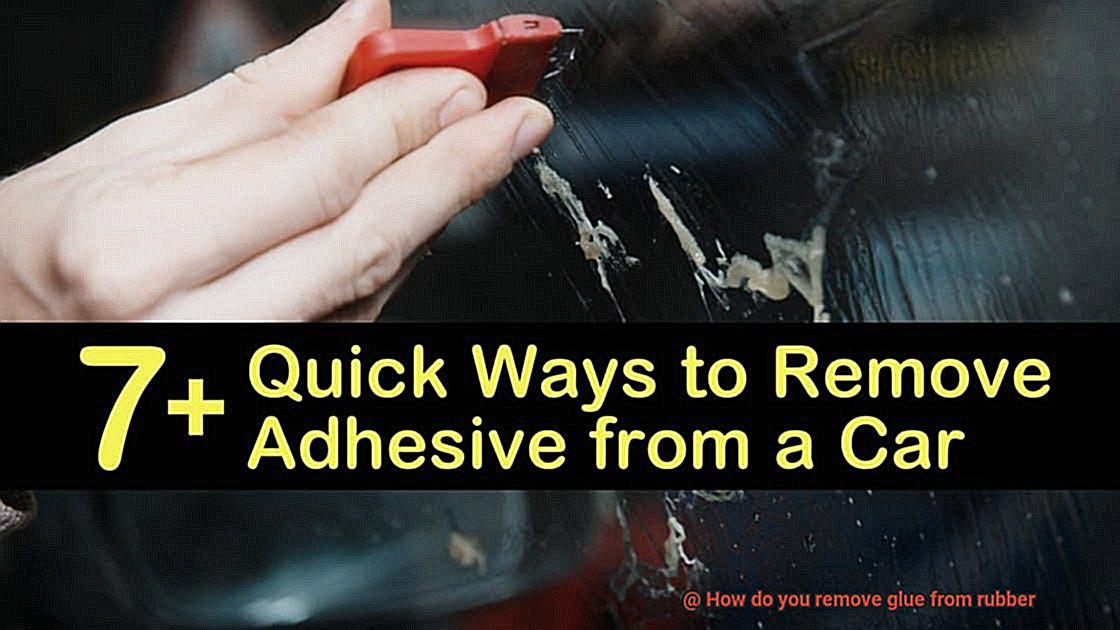
How to Remove Glue from Rubber Surfaces
Removing glue from rubber surfaces can be a challenging task, but with the right approach and tools, it can be done effectively. Here is a comprehensive guide on how to remove glue from rubber surfaces:
Gather your supplies
Before you begin, make sure you have all the necessary supplies on hand. This may include rubbing alcohol or acetone, a cloth or sponge, a hairdryer or heat gun, a scraper or credit card, adhesive remover (if needed), baking soda or toothpaste (if needed), mild dish soap, warm water, and a clean cloth or sponge.
Choose the appropriate method
Depending on the type of glue and the sensitivity of the rubber surface, select the method that is most suitable. If you’re unsure, start with a gentle method such as rubbing alcohol or acetone.
Apply rubbing alcohol or acetone
Dampen a cloth or sponge with rubbing alcohol or acetone. Gently rub the affected area of the rubber surface to break down the glue. Apply only a small amount of solvent at a time to avoid damaging the rubber. If necessary, repeat this step until the glue starts to dissolve.
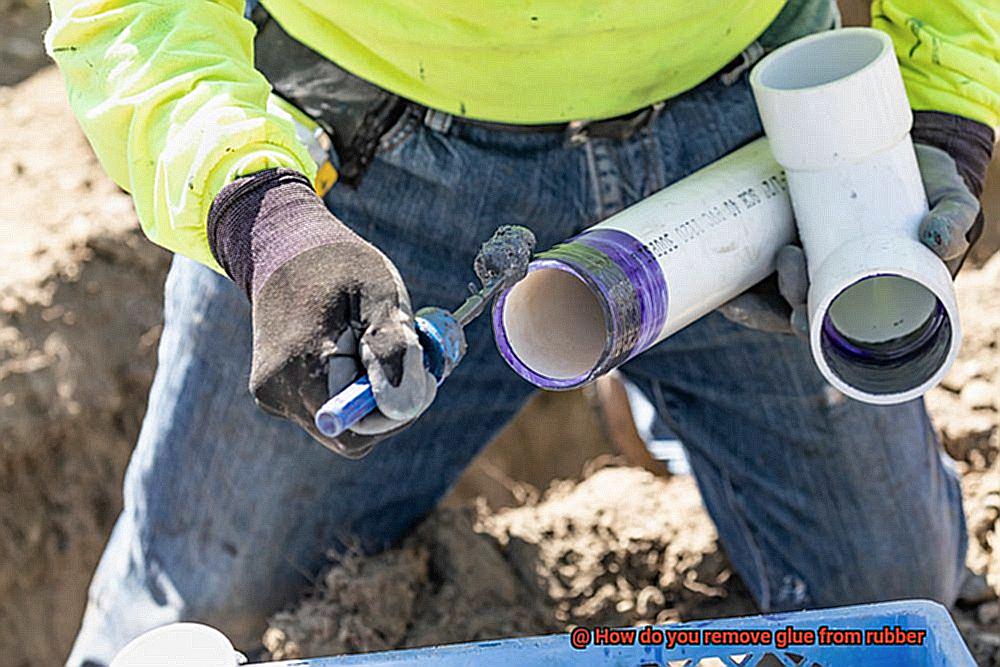
Use heat to soften the glue
If the glue is not coming off easily, you can use heat to soften it. Use a hairdryer or heat gun on a low setting. Hold it a few inches away from the glue and move it back and forth across the area. As the glue heats up, it will become softer and easier to remove.
Scrape off the softened glue
Once the glue has softened, use a scraper or your fingers to gently peel off the glue. Be careful not to scratch or damage the rubber surface.
Try alternative methods if needed
If the glue is stubborn or if you are working with a delicate rubber surface, you may want to try alternative methods. For example, you can apply a generous amount of peanut butter to the glue and let it sit for several minutes to help loosen the adhesive. Afterward, wipe away the peanut butter and gently scrub off any remaining residue.
Clean the rubber surface
After removing the glue, clean the rubber surface with mild dish soap mixed with warm water. Gently scrub the area with a soft cloth or sponge to remove any residue left behind by the adhesive remover or other cleaning agents used.
Rinse and dry
Rinse the rubber surface well with clean water to remove any soap residue. Then, allow it to air dry completely before using or storing.
Using Rubbing Alcohol or Acetone
If you’re dealing with glue on a rubber surface, rubbing alcohol or acetone can come to your rescue. These solvents are known for their effectiveness in removing adhesive residues. But before you dive in, here’s what you need to know:
First and foremost, test the rubbing alcohol or acetone on a small, inconspicuous area of the rubber surface. This precautionary step ensures that these solvents won’t cause any damage or discoloration.
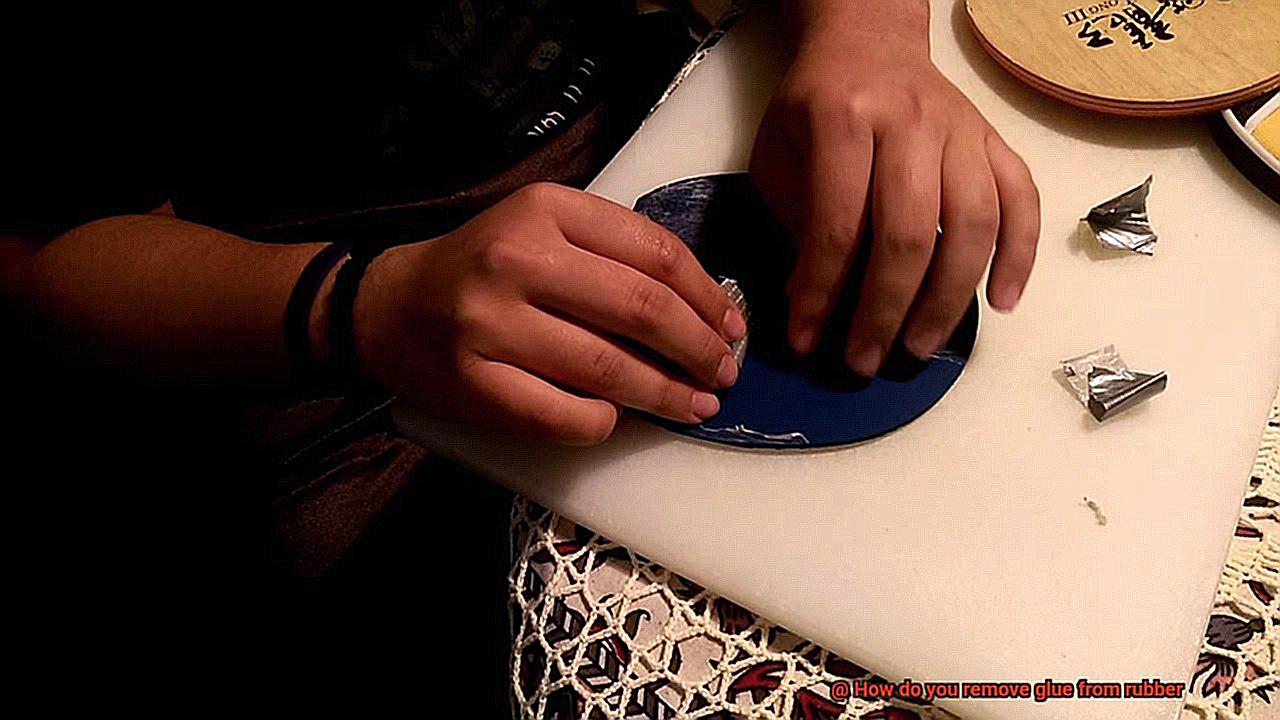
Now, gather your materials: rubbing alcohol or acetone, a clean cloth or cotton ball, mild soap, and water.
To begin the glue removal process, pour a small amount of rubbing alcohol or acetone onto a clean cloth or cotton ball. Make sure the cloth is damp but not soaked.
With gentle strokes, rub the affected area. Avoid aggressive scrubbing, as it may harm the rubber surface. Be patient and persistent until you see the glue dissolve and loosen from the rubber.
Depending on the strength of the adhesive and the amount of glue present, you may need to repeat this process multiple times. Apply more solvent as needed and keep rubbing until every trace of glue disappears.
Once the glue is gone, clean the rubber surface with mild soap and water to eliminate any residue left by the solvent. Rinse thoroughly and dry with a clean cloth.
Keep in mind that rubbing alcohol and acetone can strip away any protective coatings or finishes on the rubber. If necessary, reapply a protective coating after removing the glue to maintain the integrity of the rubber surface.
While using these solvents, ensure good ventilation and avoid inhaling their fumes. It’s also advisable to protect your hands by wearing gloves during the removal process.
In case rubbing alcohol or acetone is not readily available, alternative methods like vinegar or citrus-based solvents can be explored. However, be prepared to invest more time and effort to achieve similar results.
Using Heat
Using heat is a fascinating and effective method for removing glue from rubber surfaces. By applying heat to the glue, it softens and becomes easier to remove. But how exactly does one go about using heat to remove glue from rubber? Here’s a step-by-step guide:
Gather the necessary materials: You will need a hairdryer or heat gun, a plastic scraper or credit card, rubbing alcohol or a mild solvent, and soap and water.
Begin by directing the heat from the hairdryer or heat gun towards the area with the glue. Keep the heat source a few inches away from the surface and move it around to evenly distribute the heat. As you do so, watch in awe as the glue starts to soften under the intense heat.
As the glue heats up, it may start to bubble or become more liquid-like, like a hot lava flow slowly melting away. This is a sign that it is softening and becoming more pliable.
Once the glue has reached its melty state, take your trusty plastic scraper or credit card and gently scrape off the glue. Be cautious not to apply too much pressure or use any abrasive tools that could leave marks on the rubber surface.
If there are any stubborn remnants of glue left behind, fear not. Grab your bottle of rubbing alcohol or mild solvent and apply it to a cloth or cotton ball. With gentle strokes, rub away the pesky residue. Remember to test the solvent on a small, hidden area of the rubber first to ensure it won’t cause any damage.
After successfully removing all traces of glue and residue, cleanse the rubber surface with soap and water. Wash away any lingering chemicals and dirt, leaving behind a pristine surface ready to take on new challenges.
Using an Adhesive Remover
Using an adhesive remover is a simple and effective solution for removing pesky glue stains from rubber surfaces. Whether you’re dealing with super glue, epoxy, or any other type of adhesive, an adhesive remover can make the task a breeze. Here’s a step-by-step guide on how to use an adhesive remover to effectively remove glue from rubber surfaces.
- Choose the right adhesive remover: Consider the type of glue you’re dealing with and the type of rubber surface you have. There are different types of adhesive removers available, such as solvent-based, citrus-based, and alcohol-based removers. Solvent-based removers are ideal for strong adhesives like epoxy or super glue, while citrus-based or alcohol-based removers are better for more delicate rubber surfaces.
- Test on a small area: Before diving into the main stain, it’s always a good idea to test the adhesive remover on a small, inconspicuous area of the rubber surface. This will ensure that the remover doesn’t cause any damage or discoloration.
- Apply the adhesive remover: Once you’ve chosen the appropriate adhesive remover and tested it, apply it directly to the glue stain. Use a brush or a sponge to evenly distribute the remover over the affected area.
- Let it sit: Allow the adhesive remover to sit on the glue for a few minutes, following the instructions provided by the manufacturer. This will give the chemicals in the remover time to break down the adhesive and loosen its grip on the rubber surface.
- Scrape off the softened glue: After letting the adhesive remover work its magic, gently scrape off the softened glue using a plastic scraper or a soft cloth. Be careful not to scratch or damage the rubber surface while doing this.
- Repeat if necessary: If there is still some glue residue remaining, repeat steps 3 to 5 until all of the glue is removed. Some stronger adhesives may require multiple applications to completely dissolve.
- Clean the surface: Once all of the glue has been removed, it’s important to clean the rubber surface to remove any residue from the adhesive remover. Use warm soapy water and a cloth to thoroughly clean the area. Rinse with clean water and dry with a clean cloth.
- Follow safety precautions: Always read and follow the manufacturer’s instructions when using an adhesive remover. This may include wearing gloves, working in a well-ventilated area, or using additional safety equipment to protect yourself during the process.
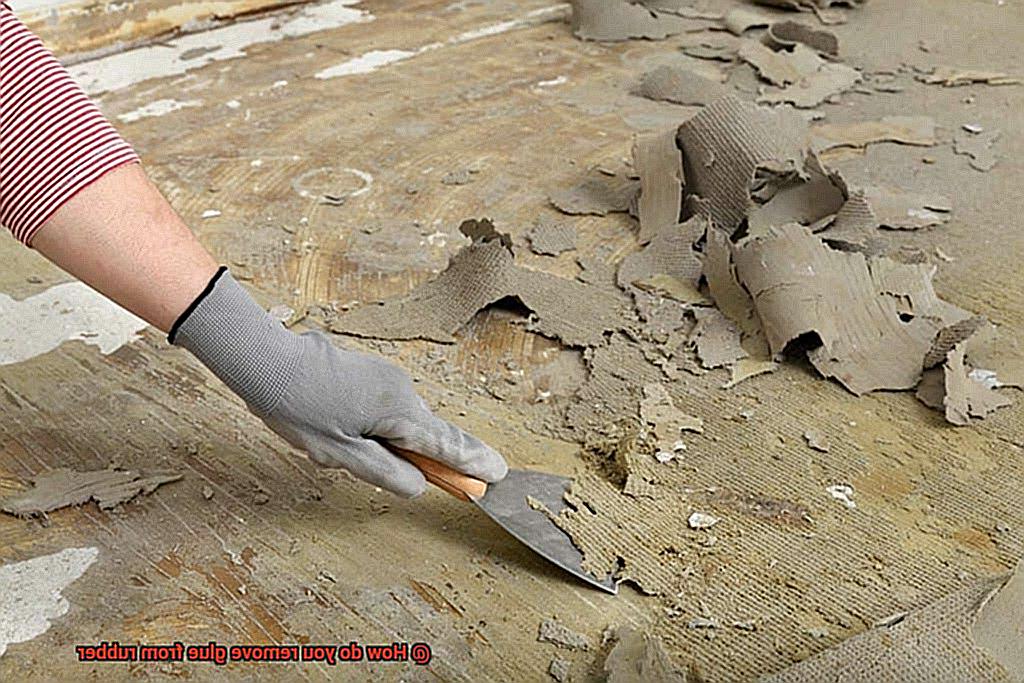
Remember, if you’re unsure about which adhesive remover to use or if you’re dealing with a particularly stubborn glue stain, it’s best to consult a professional or seek advice from a hardware store. They can provide guidance and recommend the best adhesive remover for your specific situation.
Using Natural Products
In today’s world, where people are becoming more conscious about their health and the environment, using natural products has become an increasingly popular choice. Whether it’s in our skincare routines, cleaning products, or even in removing stubborn glue from rubber surfaces, natural products are proving to be effective, safe, and eco-friendly alternatives.
When it comes to removing glue from rubber surfaces, there are several natural products that you can rely on. Let’s dive into some of these tried-and-tested methods:
- Vinegar: This versatile household item is not just for cooking and dressing salads. Vinegar’s acidic properties make it a great choice for breaking down adhesive bonds. To use vinegar, soak a cloth or sponge in it and apply it to the glued area. Let it sit for a few minutes to allow the vinegar to penetrate the glue. Then, gently scrub the area with a brush or sponge to remove the glue.
- Lemon Juice: In addition to being a refreshing citrus fruit, lemons also possess citric acid, which works wonders in dissolving adhesive bonds. Squeeze fresh lemon juice onto a cloth or sponge and apply it to the glued area. Allow it to sit for a few minutes before scrubbing the area with a brush or sponge.
- Rubbing Alcohol: If you’re looking for a natural solvent to remove glue from rubber surfaces, look no further than rubbing alcohol. It effectively dissolves the adhesive, making it easier to remove. Dampen a cloth or sponge with rubbing alcohol and apply it to the glued area. Let it sit for a few minutes before gently scrubbing the area to remove the glue.
- Coconut Oil: You may be surprised to learn that coconut oil can also be an effective natural product for removing glue from rubber. Its oily consistency helps loosen the adhesive bond. Apply a small amount of coconut oil directly onto the glued area and let it sit for a few minutes. Then, gently rub the area with a cloth or sponge to remove the glue.
- Baking Soda Paste: Baking soda, a staple in many households, can also come to the rescue when it comes to removing stubborn glue from rubber surfaces. Its abrasive nature aids in breaking down the adhesive bond. Simply mix equal parts baking soda and water until you have a thick paste. Apply the paste onto the glued area and let it sit for a few minutes. Then, scrub the area with a brush or sponge to remove the glue.
Safety Precautions to Take When Removing Glue from Rubber Surfaces
When it comes to removing glue from rubber surfaces, it is crucial to prioritize safety. Here are some essential safety precautions to keep in mind:
- Wear Protective Gear: Before you start removing the glue, make sure to put on the appropriate protective gear. This includes gloves, safety goggles, and a mask. Gloves will shield your hands from any chemicals or solvents used in the removal process. Safety goggles will protect your eyes from potential splashes or fumes. A mask is essential to prevent inhaling any harmful fumes that may be released.
- Work in a Well-Ventilated Area: Ensure that you carry out the glue removal in a well-ventilated area. This will help minimize the inhalation of any fumes that may be emitted during the process. If possible, open windows or use fans to improve air circulation. If your work area lacks proper ventilation, consider using a respirator mask to filter out harmful particles from the air.
- Read and Follow Product Instructions: Different glue removers may have specific safety instructions provided by the manufacturer. Take the time to thoroughly read and follow these instructions. Pay close attention to any warnings or precautions mentioned on the product label, such as recommended usage, application techniques, and safety measures. Adhering to these instructions will ensure your safety and yield effective results.
- Test in an Inconspicuous Area: Before applying any glue remover to a larger area of the rubber surface, perform a patch test in an inconspicuous area. Apply a small amount of the glue remover and observe for any adverse reactions or damage to the rubber. This preliminary test will help determine if the product is safe for use on that particular type of rubber and prevent potential harm or discoloration.
- Avoid Heat Sources: Stay away from heat sources like open flames or hot air guns when removing glue from rubber surfaces. Rubber is susceptible to melting or deforming when exposed to high temperatures, leading to irreversible damage. Instead, opt for solvents or adhesive removers specifically formulated for removing glue from rubber surfaces.
- Keep Children and Pets Away: Ensure that children and pets are kept away from the work area during glue removal. Some glue removers may contain harsh chemicals that can be harmful if ingested or come into contact with skin or eyes. It is crucial to store any chemicals or solvents out of reach to prevent accidental ingestion or exposure.
- Clean Up Properly: Once you have successfully removed the glue from the rubber surface, clean up any residue or debris thoroughly. Dispose of any used products, such as adhesive removers or solvents, according to the manufacturer’s instructions. Rinse the area with water and mild soap to remove any remaining residue. Additionally, properly dispose of any used gloves, masks, or other protective gear.
Benefits of Removing Glue from Rubber Surfaces
Removing glue from rubber surfaces offers a multitude of benefits that go beyond just aesthetics. Not only does it restore the original appearance of the rubber, but it also improves functionality, maintains durability, enhances safety, and increases versatility.
First and foremost, removing glue brings back the clean and polished look of the rubber surface. Over time, glue can accumulate dirt and grime, leaving the rubber dull and dirty. By getting rid of the glue, you can make the rubber more visually appealing.
But it doesn’t stop there. Removing glue residue improves the functionality of the rubber. Unevenness or stickiness caused by glue can make it difficult to use or grip the rubber properly. By eliminating the glue, you restore the smoothness and grip of the surface, making it easier to handle and use.
In addition to enhancing appearance and functionality, removing glue helps in maintaining the durability and longevity of the rubber. Glue residue weakens the structure of the material, causing it to degrade or deteriorate faster. By removing the glue, you prevent any potential damage to the rubber surface, ensuring its longevity.
Safety is another important aspect. Glue residue creates a slippery or sticky surface, posing risks of accidents or injuries. By removing the glue, you eliminate this hazard and create a safer environment, particularly in areas where slip resistance is crucial, like kitchen floors or playground surfaces.
Finally, removing glue from rubber surfaces opens up opportunities for greater flexibility and versatility in its usage. Glue residue can restrict or limit the applications or purposes of the rubber. By getting rid of the glue, you are free to use the rubber in various ways without any hindrance or restriction.
To ensure a successful removal process, prioritize safety by wearing protective gear and working in a well-ventilated area. Follow instructions provided by the glue remover manufacturer, conduct a patch test, avoid heat sources, keep children and pets away during the process, and clean up any remaining residue properly.
Common Mistakes to Avoid When Removing Glue from Rubber Surfaces
When it comes to removing glue from rubber surfaces, there are a few common mistakes that you should avoid at all costs. First and foremost, using harsh chemicals or solvents is a big no-no. These not only have the potential to damage the rubber but can also be harmful to your health. Instead, opt for gentle and non-abrasive methods like rubbing alcohol or vinegar.
Another mistake to steer clear of is using excessive force or scraping tools. Rubber is a delicate material, and aggressive scrubbing or scraping can cause irreparable damage. Instead, opt for gentle techniques and tools specifically designed for removing adhesive residue from rubber surfaces.
Using excessive heat is another mistake to avoid. While heat can help soften the glue, too much heat can cause the rubber to melt or become deformed. It is crucial to use heat in moderation and avoid direct contact with flames or high temperatures.
One mistake that often goes overlooked is neglecting to test the removal method on a small, inconspicuous area of the rubber surface. Different rubber materials may react differently to various cleaning agents or techniques. Testing the method first will help ensure that it does not cause any adverse effects on the rubber.
Rushing the process is another common mistake. Some adhesive removers require a specific dwell time to effectively break down the glue. It is essential to read the instructions carefully and follow the recommended waiting time before attempting to remove the glue.
Lastly, not properly cleaning and drying the rubber surface after removing the glue can lead to residue buildup or stickiness. After successfully removing the adhesive, it is important to thoroughly clean the area with mild soap and water, followed by drying it completely.
Tips for Effectively Removing Glue from Rubber Surfaces
The correct method for removing glue from rubber surfaces is of utmost importance in order to preserve the appearance and functionality of the rubber. Glue residue can be unsightly, causing the rubber to look dirty or unkempt. Additionally, if glue is left on the surface for an extended period of time, it can harden and affect the flexibility and performance of the rubber, rendering it less effective and durable.
One effective method for removing glue from rubber surfaces is using warm soapy water. This gentle approach involves soaking the rubber in warm soapy water for a few minutes to soften the glue. Afterward, you can use a cloth or sponge to gently rub off the glue. It is essential to use mild soap and avoid harsh chemicals that may deteriorate the rubber, as this can lead to further damage.
Rubbing alcohol or isopropyl alcohol can also be used to remove glue from rubber surfaces. These alcohols work by breaking down the adhesive properties of the glue, making it easier to wipe away. To use this method, apply a small amount of alcohol to a cotton ball or cloth and gently rub it onto the glue until it loosens and can be wiped off. However, it is crucial to test a small, inconspicuous area of the rubber before applying alcohol to ensure it does not cause any discoloration or damage.
Acetone or nail polish remover can be a more potent option for stubborn glue stains. However, it is important to note that acetone should only be used on rubber surfaces that can withstand its strong properties. Apply a small amount of acetone to a cloth or cotton ball and gently rub it onto the glue until it dissolves and can be wiped away. Remember to rinse the rubber surface thoroughly with water after using acetone to remove any residue and prevent potential damage.
Q_TlEK2rt2E” >
Conclusion
There are several effective methods you can try. One option is to use rubbing alcohol or nail polish remover, which can dissolve the adhesive and make it easier to remove.
Another approach is to apply heat to the glue using a hairdryer or hot water, as this can soften it and allow for easier peeling or scraping. If all else fails, you can also try using a commercial adhesive remover specifically designed for rubber surfaces.
Remember to test any method on a small, inconspicuous area first to ensure it doesn’t damage the rubber.

